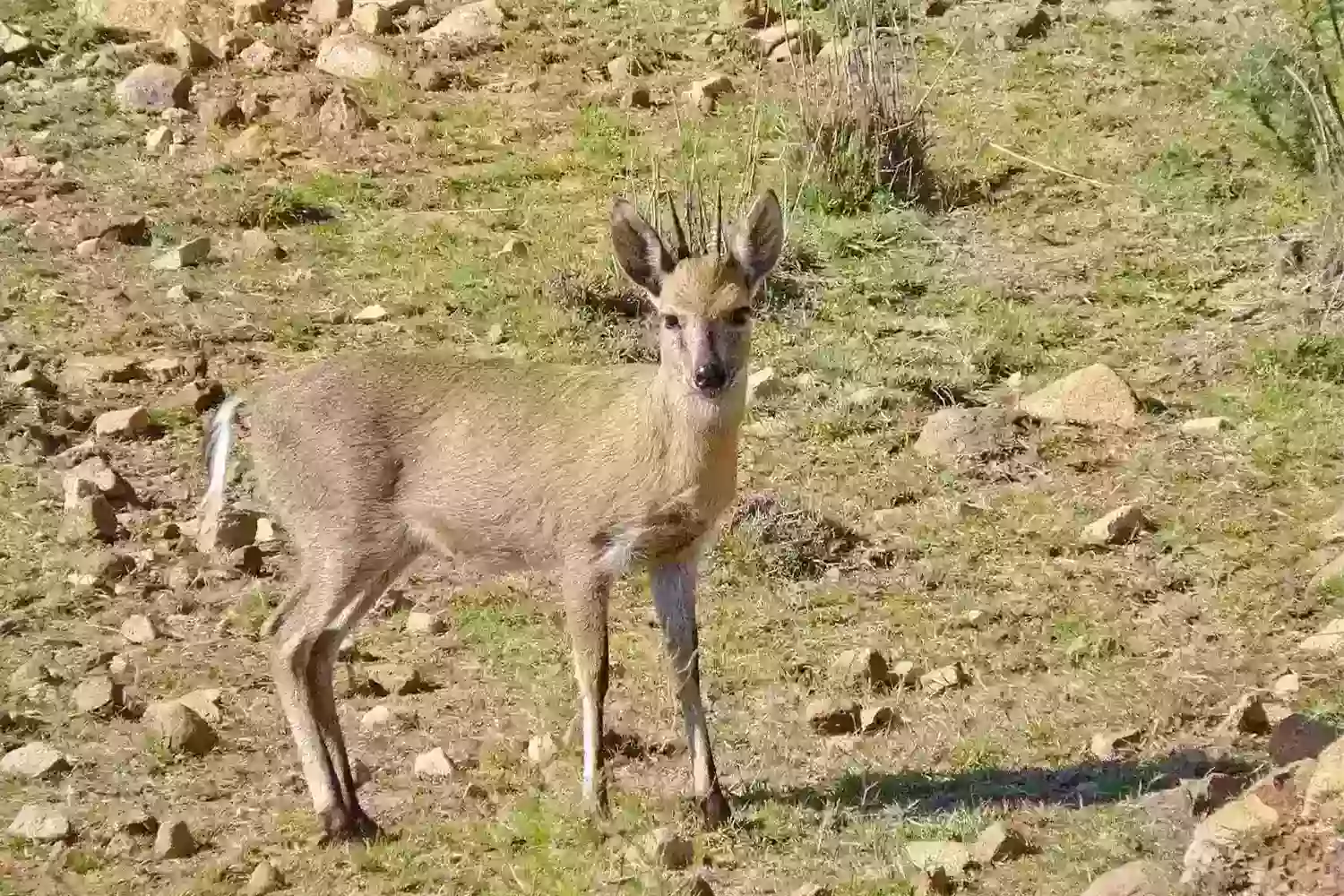What Animals Can You See on Kilimanjaro? | Wildlife During the Trek
Mount Kilimanjaro may be famous for its summit, but the journey up the mountain offers surprising wildlife encounters too. From blue monkeys in the rainforest zone to high-altitude birds like the malachite sunbird, Kilimanjaro's diverse ecosystems support a range of species. At Jaynevy Tours, our guides help you spot wildlife along the trail while respecting nature and park regulations. This guide highlights the most common animals you may see during your trek — from forest dwellers to alpine birds — making your climb a true adventure in the wild.
Home Mail UsWhat Animals Can You See on Kilimanjaro? | Wildlife During the Trek
Mount Kilimanjaro isn’t just about glaciers, volcanic cones, and epic sunrises — it’s also home to a surprising variety of wildlife. While the higher altitudes are less hospitable to animals, the lower slopes and forested zones are rich in biodiversity. Many trekkers are amazed to encounter monkeys, antelopes, and even signs of larger mammals like elephants and leopards during their journey. In this guide, we’ll explore the types of animals you might see on Kilimanjaro and the best areas to spot them along your route to the summit.

What Wildlife Lives on Mount Kilimanjaro?
Kilimanjaro supports diverse habitats due to its varying elevation zones — from rainforest to alpine desert. Each zone provides unique ecosystems that host different animal species. While large predators are rare, the mountain is home to dozens of bird species, primates, antelopes, and more.
Animals Commonly Spotted on Kilimanjaro
- Blue Monkeys: Frequently seen in the rainforest zone, especially on the Marangu and Lemosho routes.
- Colobus Monkeys: Recognizable by their long white tails, these shy monkeys live in forest canopies and are a special sighting.
- Bushbucks: Small antelopes that are commonly spotted grazing along the forest trails.
- Duikers: These shy antelopes are seen occasionally in the lower forest regions.
- Chameleons and Reptiles: Especially around the rainforest zone and moorlands — look out for the Jackson’s chameleon.
- Rodents and Small Mammals: Mice, hyraxes, and mongooses may be seen scurrying through the undergrowth or near campsites.
- Birds: From turacos and hornbills in the rainforest to white-necked ravens in the alpine zone, Kilimanjaro is a birder’s dream.
Rare and Elusive Animals on Kilimanjaro
While most wildlife encounters are with smaller species, there have been reports of larger animals such as:
- Elephants: Occasionally seen on the northern slopes near the Rongai Route or Shira Plateau, especially during dry seasons.
- Leopards: Very rare and nocturnal, leopards have been spotted near the forest edge but sightings are extremely uncommon.
- Buffaloes: Some sightings occur near the Shira and Londorossi gate area; these animals usually avoid human activity.
- Civets and Genets: These nocturnal cats roam the forest but are rarely seen by trekkers.
Best Zones for Wildlife Viewing
- Rainforest Zone (1,800–2,800 m): The most biodiverse area with monkeys, birds, insects, and reptiles.
- Moorland Zone (2,800–4,000 m): Fewer mammals but good for spotting sunbirds, hyraxes, and small rodents.
- Shira Plateau: A hotspot for elephant and buffalo signs; trekkers sometimes see animal tracks or dung along trails.
- Lower Slopes of Rongai Route: Known for fewer crowds and more chances of wildlife sightings, including elephants and antelope.
Wildlife Conservation on Kilimanjaro
Kilimanjaro is a protected area, managed under Kilimanjaro National Park. Rangers and conservation efforts help protect native species and habitats. All trekkers are advised not to feed or approach animals and to follow Leave No Trace principles to keep the mountain pristine for both wildlife and future adventurers.
FAQs About Animals on Kilimanjaro
Are there dangerous animals on Kilimanjaro?
No major threats. While larger animals like elephants and buffalo exist, they usually avoid hikers. Treks are safe when guided by professionals.
Can you see lions or giraffes on Kilimanjaro?
No. Lions and giraffes are found in Tanzanian national parks like Serengeti and Tarangire. Kilimanjaro’s ecosystem doesn't support these species.
Is it safe to trek with monkeys nearby?
Yes. Monkeys such as colobus and blue monkeys are harmless and generally avoid humans. Do not feed or provoke them.
When is the best time to see wildlife on Kilimanjaro?
The dry season (January–March and June–October) offers better visibility and more animal activity near water sources on the mountain.
Do animals come near the camps?
Small mammals like rodents or mongooses may visit at night, especially if food is left out. Larger animals usually stay away from campsites.
Final Thoughts
Wildlife on Mount Kilimanjaro adds a magical touch to the trekking experience. While it’s not a safari, spotting monkeys in the misty rainforest or hearing the call of distant birds makes the journey unforgettable. Keep your eyes open and camera ready — nature has its surprises, even on the roof of Africa.
BOOKING FORM
Book your tour here
RELATED PACKAGES
- Baraka Aquarium and Nungwi Village in Zanzibar
- Diving Tour in Zanzibar
- Zanzibar Sky Diving Tour
- Dolphin Snorkeling Sandbank Tour in Zanzibar
- Horse Riding Tour in Zanzibar
- Jet Ski Tour in Zanzibar
- Jozani Forest Visiting in Zanzibar
- Quad Bike Tour in Zanzibar
- Traditional Sunset Dhow Cruise Tour in Zanzibar
- The Best Stone Town Tour in Zanzibar
- Zanzibar Butterfly Tour
MORE PACKAGES
- Mount Kilimanjaro
- Ngorongoro Crater
- Serengeti National Park
- Tarangire National Park
- Lake Manyara National Park
- Zanzibar Island
- East Africa Packages
- Tanzania Safari From Zanzibar
- Kenya packages
- Rwanda Packages
- Uganda packages
- Mikumi National Park
- Kitulo National park
- Mkomazi National park
- Selous (Nyerere National Park)
